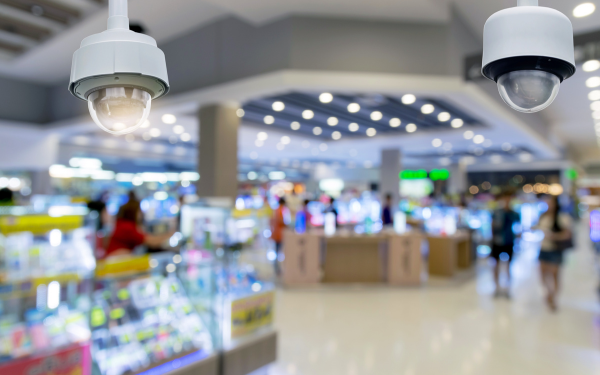Across retail and hospitality, self-service kiosks have become synonymous with speed, convenience and great customer experience. Their ability to slash wait times, increase throughput and give consumers a greater feeling of control are just some of the reasons why kiosk adoption is on the rise, and is forecast to carry on that way for the rest of the decade.
Yet the self-service boom has not been without one or two bumps in the road. What technology is perfect, after all?
Arguably the biggest issue the industry is facing right now is shrinkage. In accounting, shrinkage means the difference between recorded or expected inventory and what a business actually has available to sell. In other words, it means a loss of assets.
Although shrinkage can be caused by miscounting and product damage, by far the biggest cause of shrinkage in retail is theft. This is the issue facing self-service kiosks – or, to be completely accurate, self-checkout lanes of the kind common in supermarkets. Because while self-checkout might be convenient and empowering for customers, it also seems to be facilitating more shoplifting.
The numbers show it’s an issue that can’t be ignored. One study from the US found that just under 7% of self-checkout transactions resulted in some shrinkage, compared to 0.32% of transactions carried out by a cashier. This translates into losses totalling 3.5% of overall sales at self-checkout, versus 0.21% at staffed checkout lanes.
There have been claims that the unacceptably high shrinkage rates from supermarket self-checkout suggest there’s some kind of inherent security flaw in kiosks. But this doesn’t stack up when you consider that there have been no such problems in other sectors where kiosks are widely used.
So what is it about grocery that makes security around self-checkout a unique challenge? And what can be done to put it right?
An issue with UX
A clue about why supermarket self-checkouts are so uniquely plagued by shrinkage comes from the fact that not all of the ‘theft’ that occurs is intentional. Studies have also shown that a sizeable proportion is accidental, stemming from customers not realising items haven’t scanned properly, or unintentionally putting items in bags without scanning them.
When baggage weighing systems trigger an alert (and they are not entirely accurate either), the default for staff is often to key in the override without checking – itself a function of problems with bagging systems being so common staff assume ‘user error’, and also wanting to get to the next customer quickly.
The fact that this leads to unintentional shrinkage is symptomatic of another problem – the scanning and weight-based checking systems on supermarket self-checkout systems are not as efficient or as user-friendly as they should be. Rather, they are a common and frustrating pain point for customers, leading to unnecessary delays while staff have to be called over.
In this sense, the interests of security and convenience go hand-in-hand. The way current self-checkout systems are built to scan and check large numbers of items as they have to do in supermarket settings is neither convenient nor secure. The conclusion has to be that it’s down to unsatisfactory UX design.
Looking to AI
But what could improve it? It has to be acknowledged that self-checkout systems have evolved the way they have because there haven’t been any viable technological alternatives.
But that is changing. And as with so many things, AI is the driver. Computer Vision is a sub-field of AI that ‘reads’ what’s in a picture or video. It’s a technology already being widely explored in fields like medical imaging, where computers can pick out details in medical scans with much greater accuracy than people. And it’s a key component in the development of autonomous vehicles, allowing the onboard control system to ‘see’ the road and road conditions and respond accordingly.
It could also be the technology that transforms supermarket self-checkout. The idea is, you replace a scanner with a camera, and use Computer Vision AI to identify items for processing the sale.
There are a number of mooted benefits. First, it’s suggested that AI identification would be more accurate and reliable. No more missed scans, no more having to turn an item over and over to find a barcode. The computer identifies each product at a glance. That would also make self-checkout faster and more efficient.
Crucially, it would be more secure. And you wouldn’t even need the dreaded bagging area. The camera doubles up as a CCTV system. It could see attempts to put items into bags without paying for them, and would act as an effective deterrent.
How far are we from this kind of technology being viable in retail? There are already numerous software vendors bringing AI self-scan products onto the market. Here at AURES, it’s something we’re excited about incorporating into our kiosks.
If you’re interested in finding out more, AI self-checkout will be the subject of a talk at the Retail Technology Show in London from 24-25 April. You can still register for free to attend the show. If you plan on attending, see you there!




